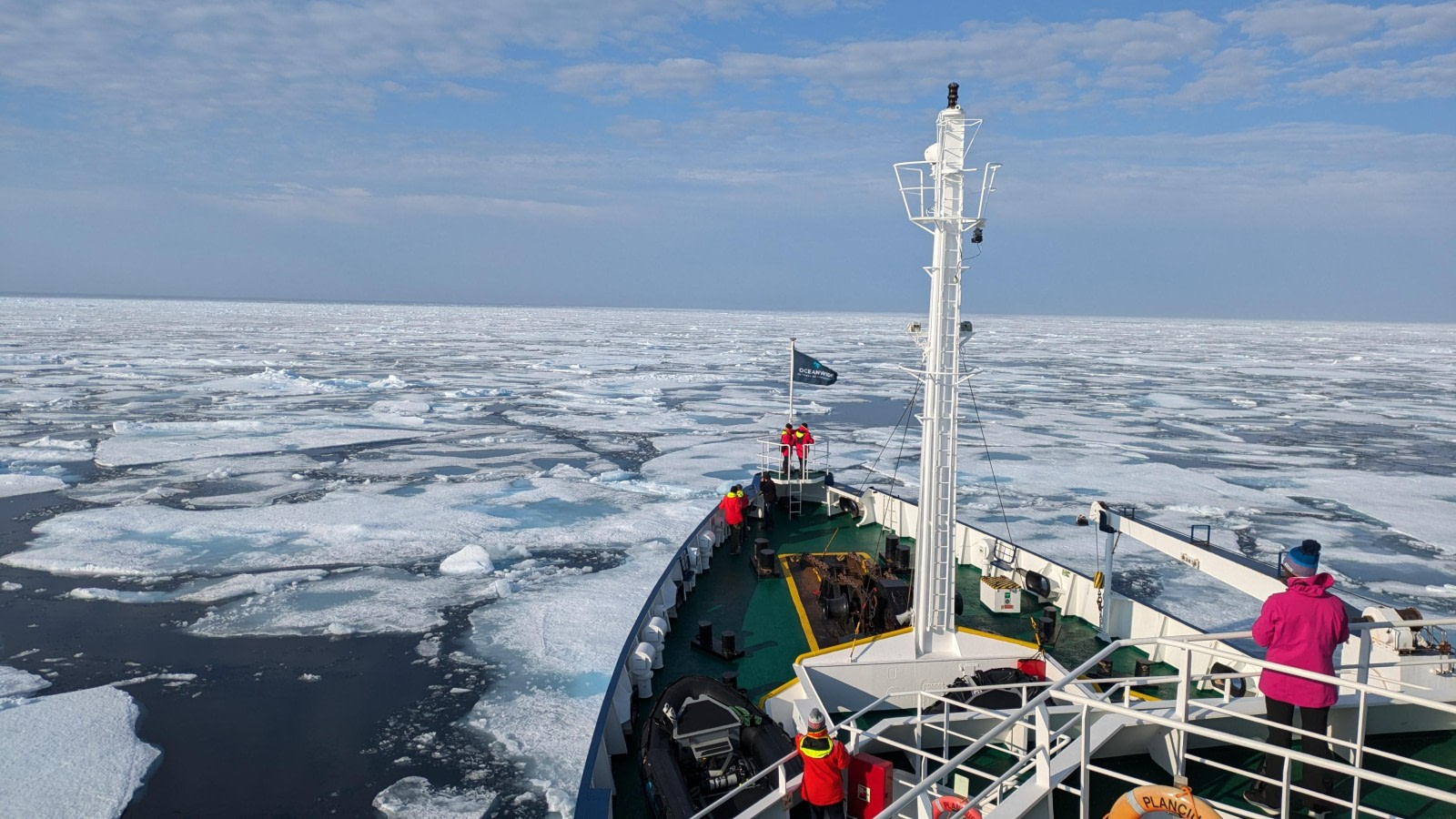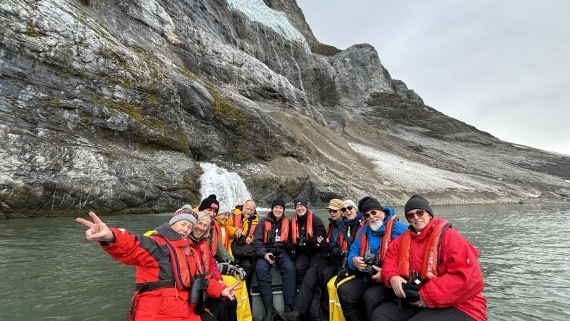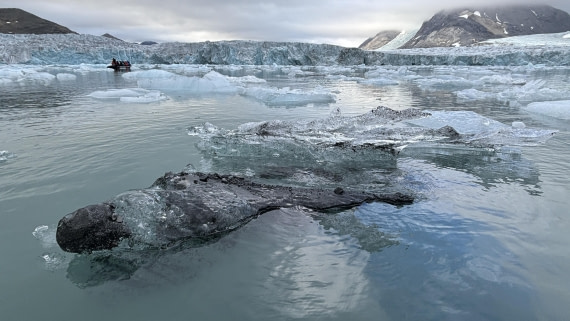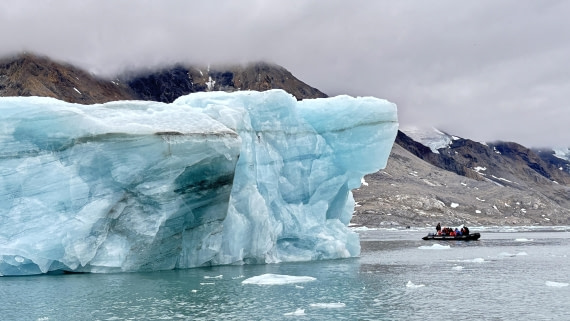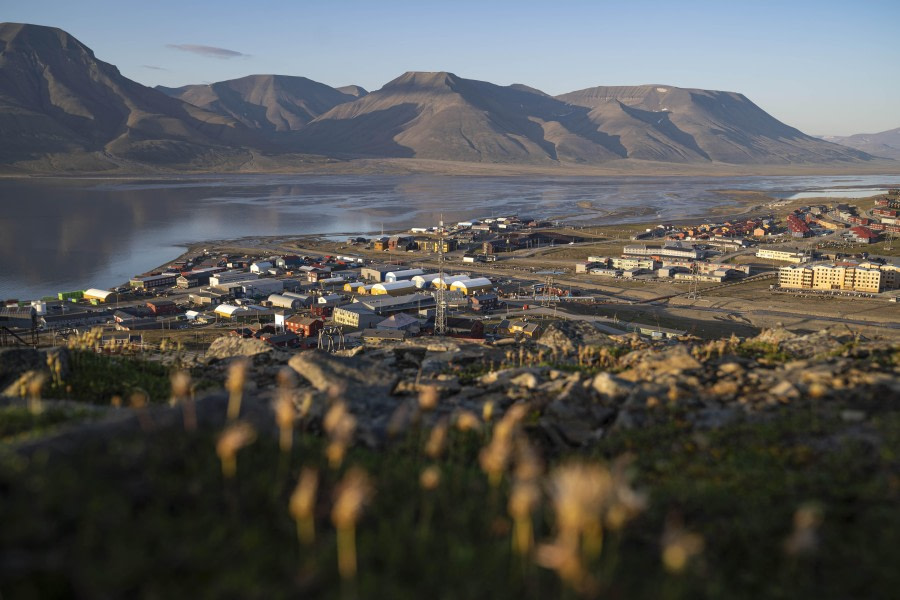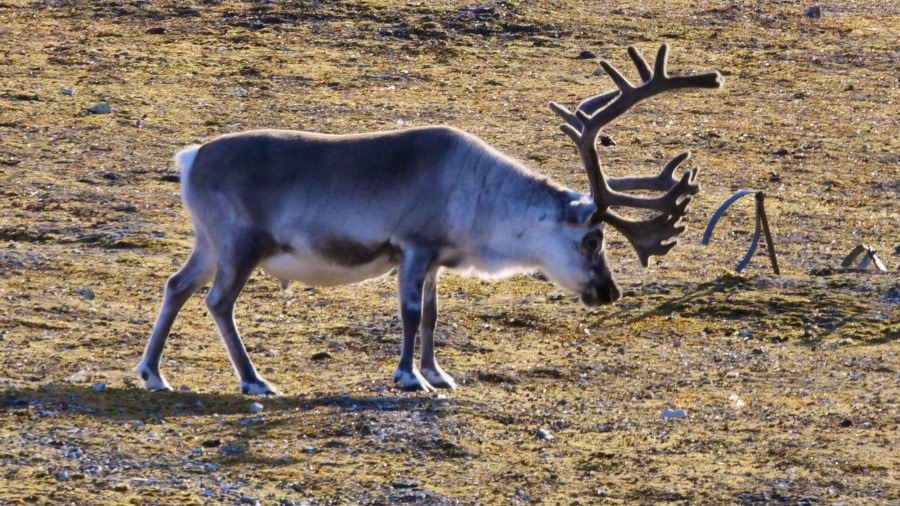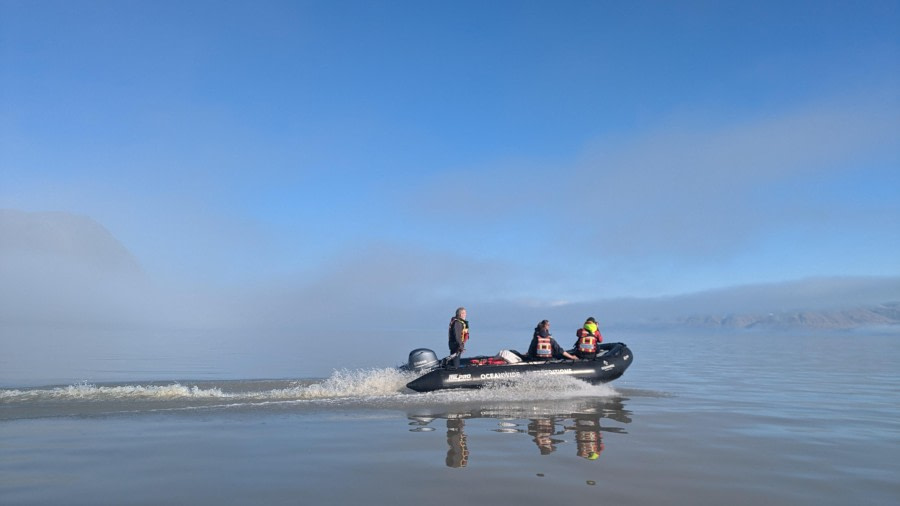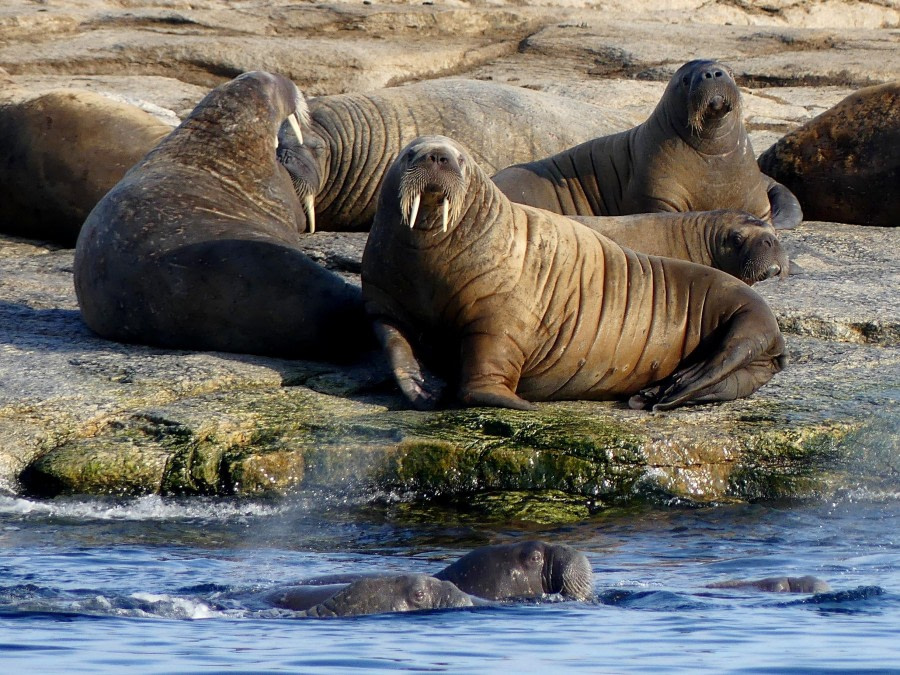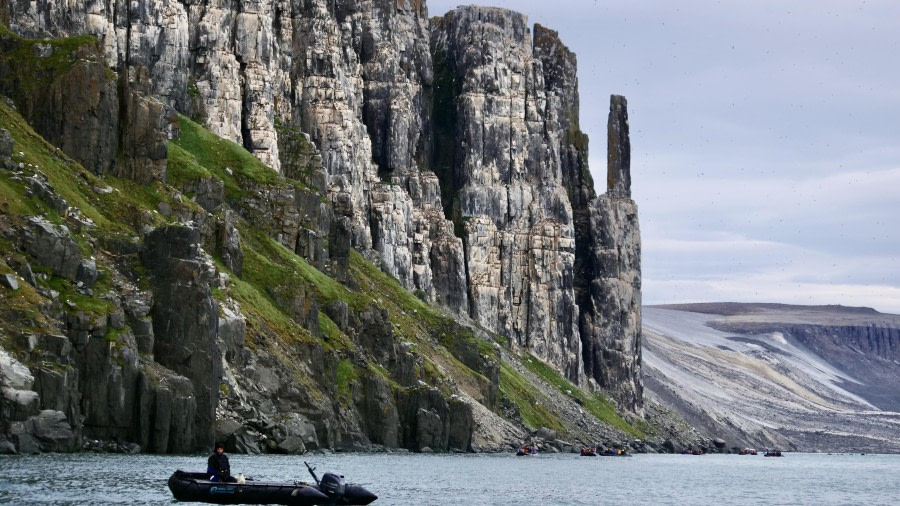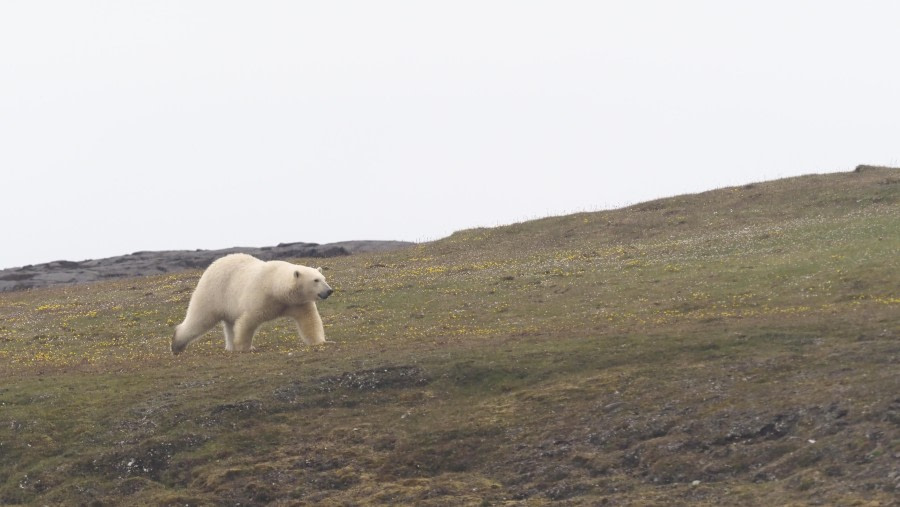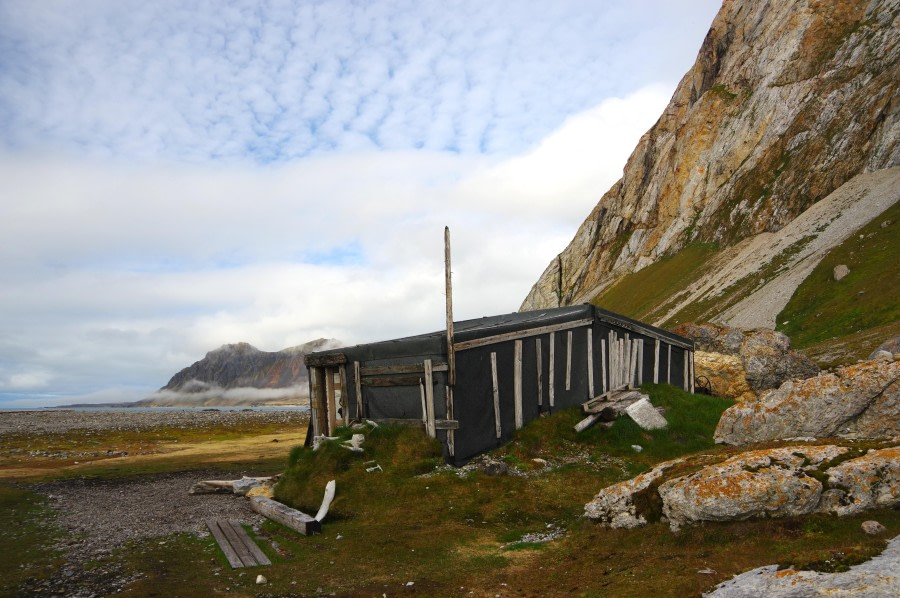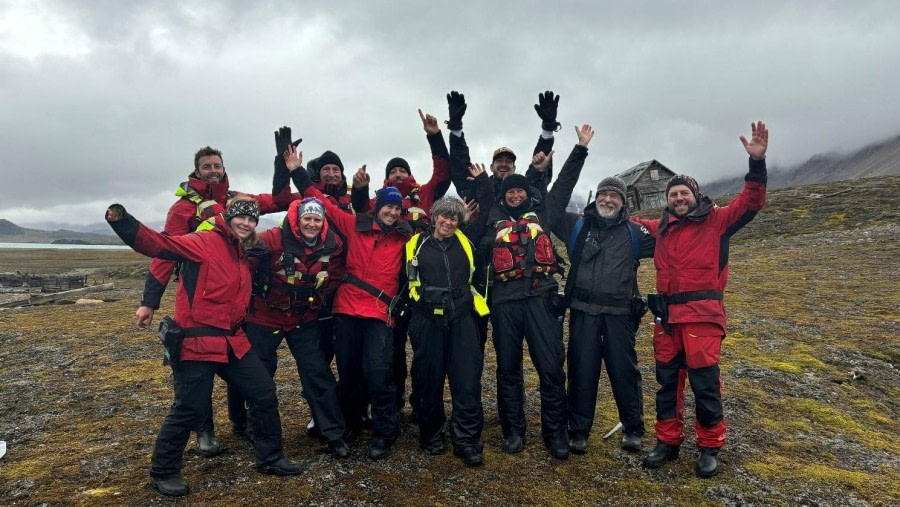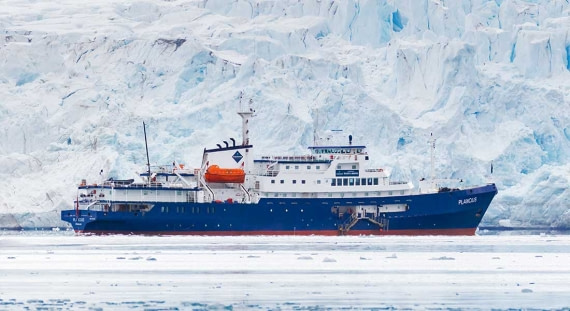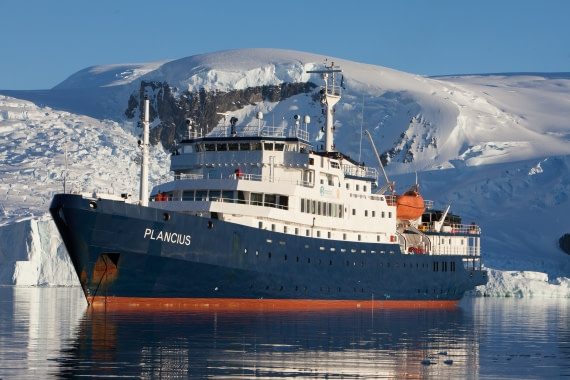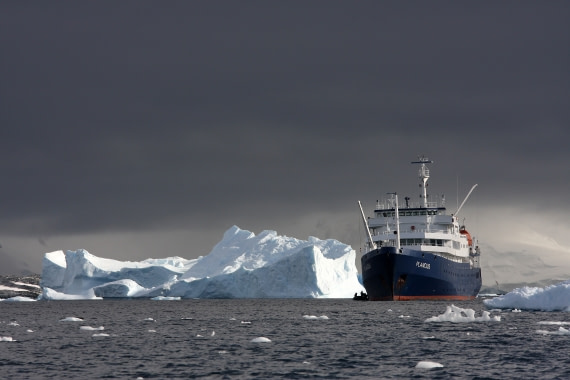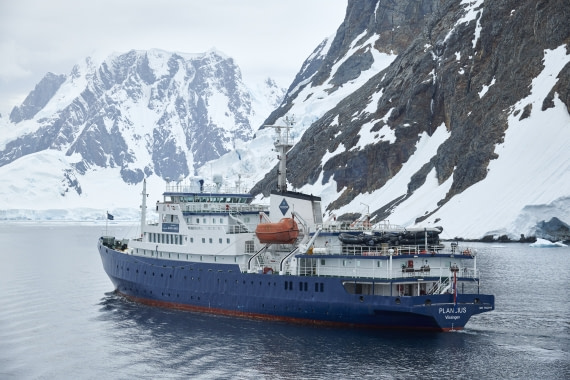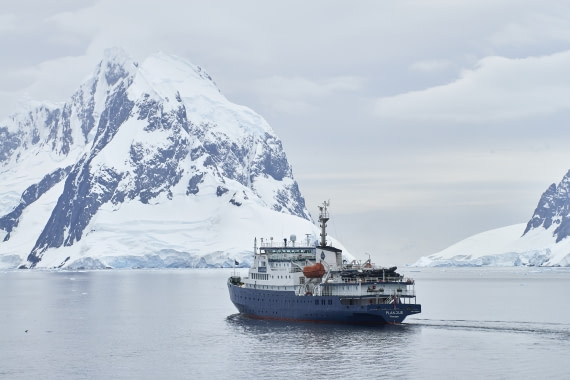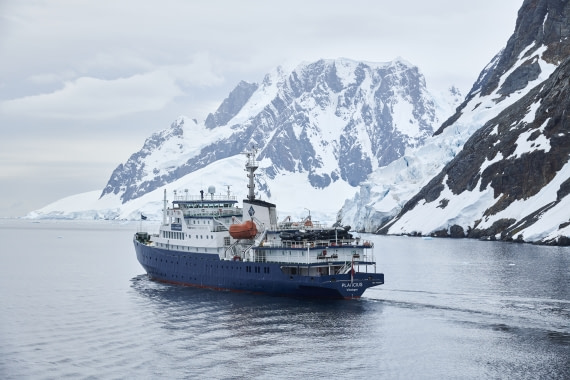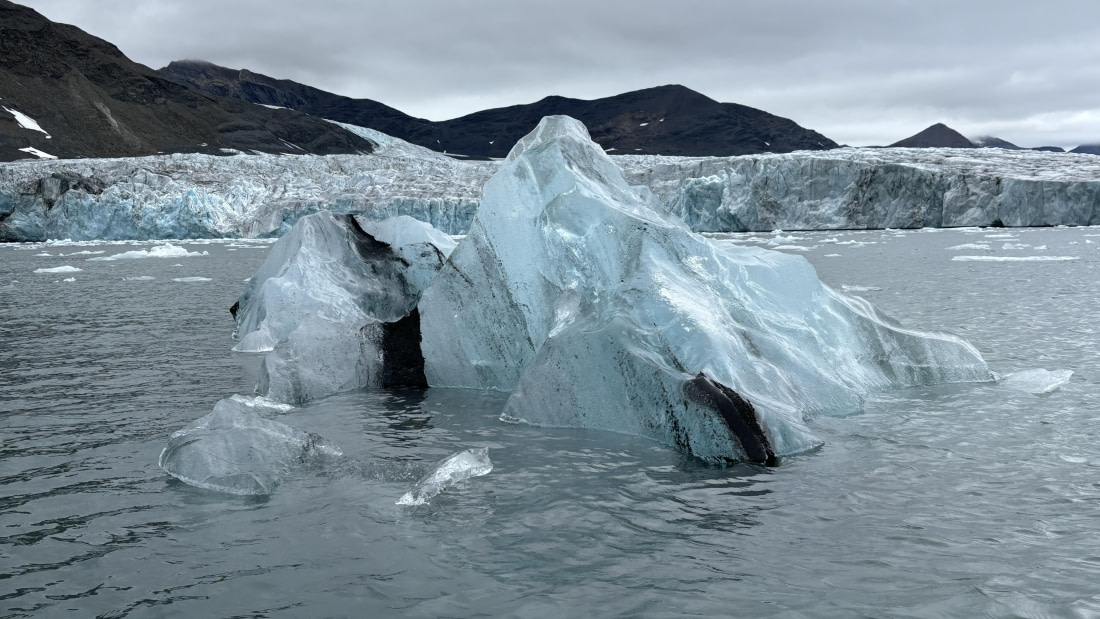| Date: |
16.08.2024 |
| Position: |
77°01.5’N / 015°56.0’E |
| Wind: |
S 3 |
| Weather: |
Cloud/fog |
| Air Temperature: |
+9 |
Overnight, Plancius had made excellent progress around the southern tip of Spitsbergen (Sørkapp), and those who woke early enjoyed a coffee in the Lounge while enjoying the wild seascapes of the approach to Hornsund.
A strong offshore wind was sweeping white caps off the tops of large ground swells rolling into the fjord, a dramatic scene made all the more impressive by the scudding low clouds racing through the large peaks surrounding Hornsund. Those not yet awake were roused from their slumber by Ali’s routine wake-up call, and shortly after, it was time for breakfast. Meanwhile, the Expedition Team scouted Hornsund from the Bridge – checking for Polar Bears and assessing conditions to see if a landing was possible. Captain Evgeny brought our ship deeper into Hornsund, out of the worst of the wind, and we found ourselves anchoring off the eastern side of Gnålodden, our destination for the morning.
The Zodiac ride-in was a little breezy. When we arrived at the beach, we found that there was a bit of a wave surge on the shoreline, so we timed our disembarkation from the Zodiacs carefully, stepping ashore onto a lovely little pebble beach at the foot of the impressive cliffs here. Once ashore, we were free to roam around the perimeter, which included several rocky peninsulas, the hut occupied by Wanny Woldstad (the intrepid Norwegian hunter and trapper), the remains of a Pomor building, and a grave. John was on hand to talk us through the story of Wanny and of the Pomors and to give insight into what it might have been like to live here for years, trying to make a living from this unforgiving landscape.
There was also plenty of wildlife to see; the cliffs above us were crammed with Kittiwakes, and the constant noise, even audible over the strong gusts of wind, was a lovely background to our landing (Gnålodden gets its name from this sound as it is Norwegian for murmur). We saw Arctic skua on the tundra close to the hut, several large flocks of barnacle geese, purple sandpipers foraging along the small shingle beaches, and several glaucous gulls patrolling the cliffs on the look-out for an unguarded chick to pounce upon.
Several times, we saw glaucous gulls descending to the sea with their kittiwake prey. They found prominent rocks to settle on and devour their kills – gruesome, but fascinating. Many of us climbed the large grassy slopes at the back of the landing site, earning an incredible view over the mouth of Hornsund, and a closer encounter with the large flocks of kittiwakes circling overhead. After a glorious morning ashore, we returned to Plancius for another excellent lunch. Suitably recharged, we headed out again, boarding the Zodiacs for a cruise into West Burgerbukta, a steep-sided fjord that cuts into the northern side of Hornsund. Almost as soon as we boarded the Zodiacs, we heard that Tanya and the divers had spotted a small pod of beluga whales, so we headed to the fjord wall to watch these lovely white whales. We kept our distance to avoid disturbing them, but we got good views of their backs as they surfaced and could see their small blows backlit by the bright light against the steep, dark fjord walls.
After 10 minutes, we carried on, deeper into the fjord, and found ourselves marveling at the incredible deep blues of recently-calved icebergs and gazing up into the monstrous hanging glaciers towering hundreds of meters above us on the fjord walls. We also found a spectacular waterfall emerging from a conduit cut by the water into the soluble limestone walls. At the head of the fjord, we found the mighty Paierbreen, a large marine-terminating glacier with an impressive calving front some 30 meters above sea level. As we cruised past the front, taking care not to get too close, we saw several small chunks of ice fall off.
Conditions were excellent in the fjord; it was mostly flat and calm, only interrupted occasionally by a brief blast of cold air gusting down from the surrounding glaciers – a nice example of a katabatic wind. Finally, it was time to head back to Plancius, but not before we encountered several groups of curious puffins on the water; these beautiful little birds added a welcome splash of color to the otherwise largely monochrome seascape near the mouth of Burgerbukta.
The weather deteriorated rapidly, showing us just how lucky we had been today, and over a quarter of an hour, the wind strengthened, and the rain started to pour down. However, this wouldn’t dampen our enthusiasm, and after the recap, we dressed warmly and made our way to the aft deck for an Arctic barbecue! The food was excellent, the company even better, and a free bar seemed to unlock a trove of hidden dancing talent.
Before long, most of us were gyrating to Ingrid's tunes, and the evening finished up with an epic conga, weaving through the mooring stations and into the restaurant once the music finally finished. A lovely bookend to another beautiful day of expedition cruising.
